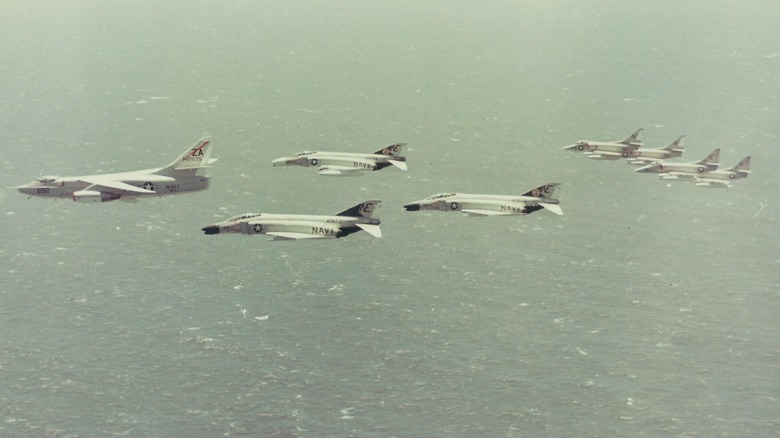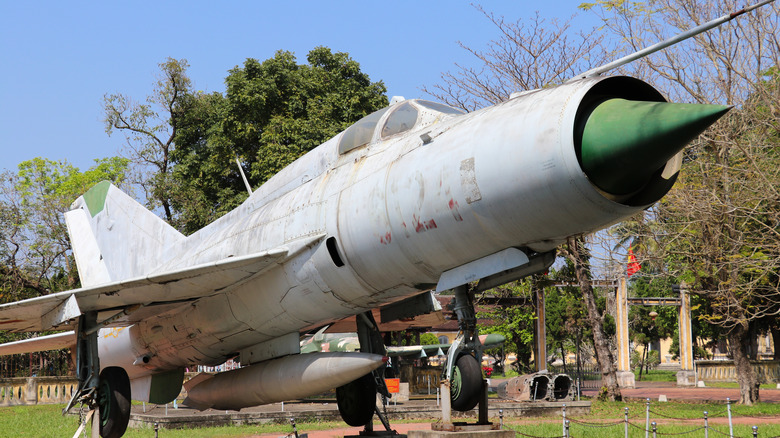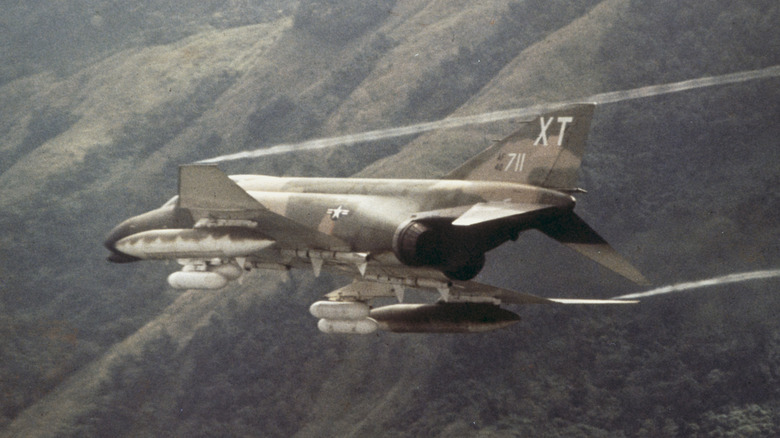Operation Bolo: The Story Of A High Stakes Fighter Jet Dog-Fight
The U.S. military and its command over the skies of Vietnam by late 1966 was strong, yet not complete. This was evidenced on Dec. 2, 1966, a day referred to as Black Friday. On this day, the Air Force lost five planes, including multiple F-4Cs, an RF-4C, and an F-105. The Navy lost three, which included an F-4B and several A-4C Skyhawks. All of these losses were due to enemy SAM or anti-aircraft fire. But they were not the only threat.
North Vietnamese fighter activity picked up at the same time in response to the U.S. operation Rolling Thunder. Possessing limited MiG-21s in the area, the North Vietnamese used them sparingly and only when they enjoyed a tactical advantage. This tactic, in conjunction with SAM batteries and anti-aircraft fire, worked well and would take down 325 F-105s by late 1967. Something had to be done about the situation and that took the form of Operation Bolo.
How the plan came together
Rules of engagement in late 1966 prevented U.S. fighters from taking on enemy aircraft over North Vietnam or from bombing their airfields. Therefore, the enemy had to be brought to U.S. fighters, and Col. Robin Olds and Capt. John "J.B." Stone of the 8th Tactical Fighter Wing knew how to do it. Olds' plan, explained by HistoryNet, was to "mount a large strike using the F-105 call signs, routes, and timings, the routine stuff that the North Vietnamese were used to seeing in the predictable bombing raids by the Thuds (a nickname for the F-105); but we would be armed for air-to-air combat."
Having been outfitted with jamming pods that mimicked the electronic signature of the F-105s, the F-4s took off on Jan. 2, 1967. Coming into North Vietnam from the west, following the same path as would a typical F-105 bombing run, the North Vietnamese launched their MiG's springing the trap. The North Vietnamese did not realize that at the same time that another batch of F-4s from the 366th Tactical Fight Wing were coming from the east, to cut them off from any escape.
What made Bolo successful
The dogfight that ensued was short but fierce with 12 F-4Cs tangled up with 14 MiG-21s. The North Vietnamese MiGs were light fighters and well-suited for combat, but the surprise of facing heavily armed F-4Cs and their AIM-7E Sparrow and AIM-9B heat-seeking missiles proved overwhelming. Within 12 minutes, seven North Vietnamese MiG-21s had been shot down which was nearly 50 percent of their total force at the time. Meanwhile, the U.S. did not lose a single plane.
Operation Bolo was a brilliant success for the U.S. but also an important change in the overall air war. The devising and execution of the plan developed by Col. Olds and Capt. Stone showcased a change in tactics for the U.S. military. For the North Vietnamese, the loss of so many of their top planes forced them to effectively ground their MiGs for weeks, giving the U.S. a round of operational freedom.


